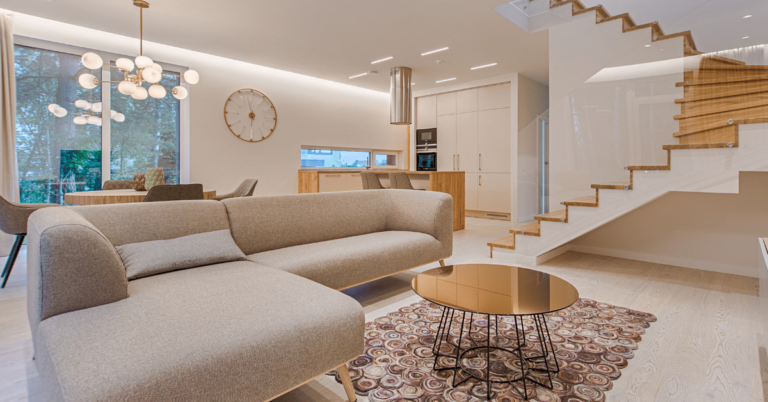Art Deco, a glamorous design movement from the 1920s, stands as one of the most iconic styles of the 20th century. Characterized by bold geometric patterns, luxurious materials, and rich, contrasting colors, Art Deco reflects the optimism and innovation of the Jazz Age. Even today, this design style remains popular, bringing a timeless touch of sophistication to homes worldwide.
In this article, we’ll explore the origins of Art Deco, its key design elements, and practical tips on how to incorporate this style into your home décor. Whether you want a full Art Deco-inspired space or a few opulent touches, this guide will help you achieve a lavish, Roaring ’20s aesthetic.
The Origins of Art Deco: Where Glamour Meets Modernity
Art Deco emerged in the aftermath of World War I, capturing the spirit of modernity and the excitement of technological progress. Officially introduced at the 1925 Paris Exposition Internationale des Arts Décoratifs et Industriels Modernes, this design movement was a departure from traditional styles. Art Deco designers embraced bold geometric forms, opulent materials, and a fascination with technology, resulting in a style that was both luxurious and forward-thinking.
This movement gained popularity across the world, particularly in architecture and interior design, influenced by Hollywood glamour, jazz music, and the discovery of King Tut’s tomb, adding an exotic flair to the style.
Key Elements of Art Deco Design
1. Geometric Patterns and Symmetry
Art Deco is defined by its use of strong, geometric patterns. Shapes such as zigzags, chevrons, and sunbursts create a sense of order and harmony. This emphasis on symmetry and structure is prominent in both architecture and interiors. In modern homes, you can bring this look into your space with patterned wallpaper, bold tiles, or geometric furniture designs.
2. Luxurious Materials
The use of lavish materials such as marble, brass, chrome, lacquered wood, and velvet was central to the Art Deco style. These materials were chosen to reflect wealth and sophistication. To recreate this luxurious feel in your home, incorporate materials like brass light fixtures, velvet-upholstered furniture, or marble countertops.
3. Bold Colors and Contrasts
Art Deco interiors often featured deep, bold colors like emerald green, royal blue, and burgundy, contrasted with metallic accents in gold, silver, and chrome. These high-contrast environments exude drama and sophistication. For a modern take, consider a black-and-gold color palette or jewel-toned accessories that pop against neutral backdrops.
4. Streamlined Silhouettes and Curves
While Art Deco is known for its sharp angles and geometric designs, it also embraced curves, especially in furniture. Sleek, rounded forms in chairs, tables, and sofas add a softness that contrasts with the angular architecture. To incorporate this look, seek out furniture that combines both straight lines and gentle curves.
5. Decorative Detailing and Ornamentation
Elaborate decorative details are essential to Art Deco. From engraved wood panels to sculpted accents and intricate patterns, ornamentation often emphasized the structure’s geometry. Consider adding decorative mirrors, sculptural art, or statement chandeliers to capture the opulence of the era.
How to Incorporate Art Deco Into Your Home
Bringing the Art Deco aesthetic into your home doesn’t require a full renovation. You can incorporate elements of this lavish style with a few key design choices. Here’s how:
1. Start with Art Deco-Inspired Furniture
When choosing furniture, look for pieces with sleek, geometric shapes or curved edges that embody the Art Deco aesthetic. Consider velvet sofas, armchairs with chrome or brass accents, and statement coffee tables. Be sure to arrange your furniture symmetrically to echo the balanced design style of the ’20s.
2. Play with Patterns
Geometric patterns are a hallmark of Art Deco design. Incorporate them through wallpaper, area rugs, and decorative pillows. Chevron or zigzag designs, for example, can easily transform a room. Don’t forget to use patterned tiles in bathrooms or kitchens for a bold statement.
3. Use Bold Colors and Metallic Accents
Make a statement with rich jewel tones, such as sapphire blues, emerald greens, and ruby reds. Combine these with metallic accents—gold, brass, or chrome—to create a luxurious, high-contrast environment. You can also keep the palette neutral with black and white but add metallic accents in furniture or lighting.
4. Embrace Luxurious Textures
Rich textures like velvet, satin, and silk were signature elements of Art Deco. Incorporate these textures into your décor with velvet cushions, satin curtains, or silk throws. A plush rug can also help ground the room while adding a touch of opulence.
5. Add Statement Lighting
Lighting played a major role in Art Deco interiors, with fixtures often doubling as art. Look for chandeliers or wall sconces with geometric designs or sculptural forms. A gold sunburst chandelier or a sleek, tiered sconce can add the perfect blend of elegance and drama to your space.
Art Deco Today: Modern Adaptations of a Classic Style
Though Art Deco originated nearly a century ago, its influence remains prominent in today’s design world. Its balance of glamour, luxury, and modernity has cemented its place as a timeless style that continues to evolve.
Homeowners today often adopt elements of Art Deco by blending the opulence of the Roaring ’20s with contemporary minimalism. For example, you might opt for a monochromatic color scheme with pops of metallic accents or choose sleek, streamlined furniture with a few geometric patterns for a modern take.
By incorporating even just a few key elements—whether it’s a bold color palette, luxurious materials, or a geometric statement piece—you can bring the elegance and sophistication of Art Deco into your home in a way that feels fresh and relevant.
Final Thoughts on Incorporating Art Deco Into Your Home
The lavishness of the Roaring ’20s continues to captivate designers and homeowners alike. With its emphasis on geometric shapes, luxurious materials, and bold contrasts, Art Deco offers an elegant yet dynamic design option for modern interiors. Whether you’re renovating an entire room or simply adding a few Art Deco-inspired touches, this home improvement style brings a sense of glamour and history into your home, elevating your living space with timeless sophistication.

